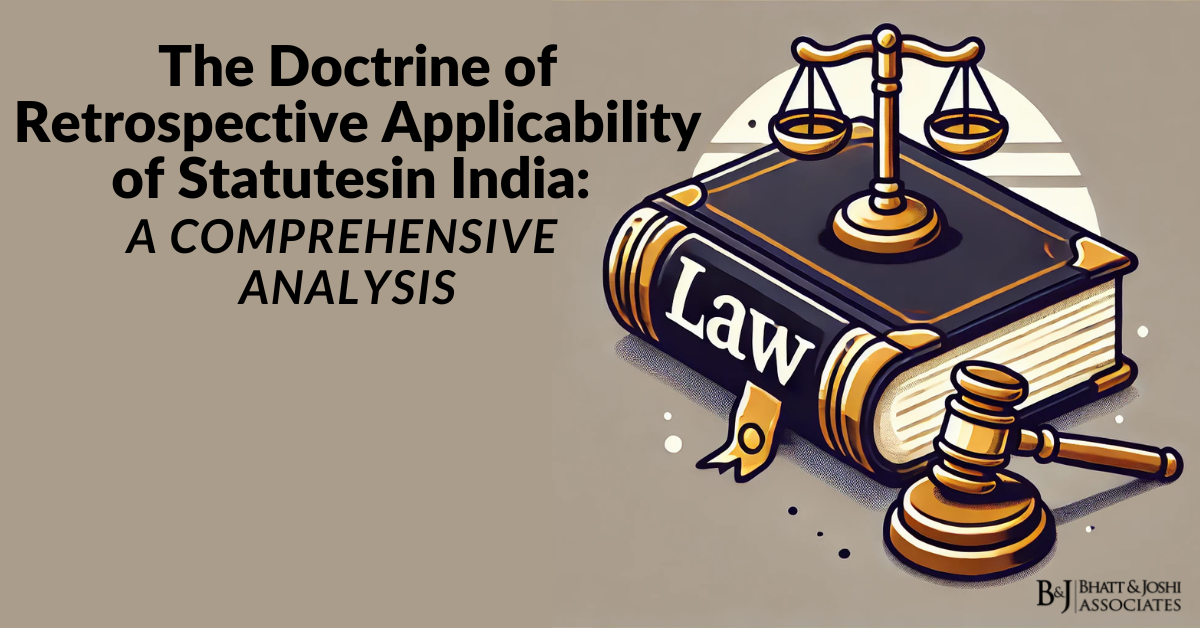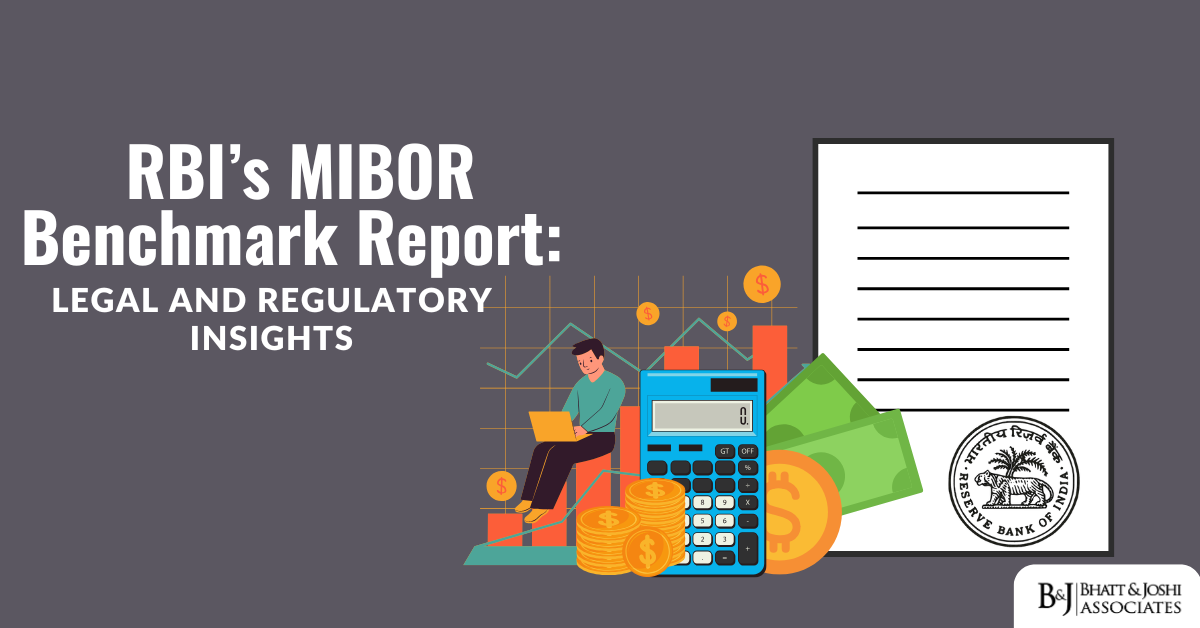How the Supreme Court and the NCLAT have Interpreted and Applied the IBC in Relation to Personal Guarantees, Statutory Dues, Contractual Claims and Criminal Proceedings

The Insolvency and Bankruptcy Code, 2016 (IBC) is a law that governs the resolution and liquidation of insolvent corporate entities in India. The main objectives of the IBC are to maximize the value of the assets of the corporate debtor, to promote entrepreneurship, to ensure availability of credit, and to balance the interests of all the stakeholders. The IBC provides a time-bound and creditor-driven mechanism for resolving the insolvency of a corporate debtor, which is a company that is unable to pay its debts. The IBC also empowers the investors who are involved in the insolvency resolution process of a corporate debtor. An investor can be either a lender who has given money to the corporate debtor or a resolution applicant who wants to buy the corporate debtor.
One of the ways that the IBC empowers the investors is by extinguishing the antecedent liabilities of the corporate debtor. These are the obligations that arose before the commencement of the insolvency proceedings. These liabilities may include personal guarantees given by promoters or directors of the corporate debtor, statutory dues owed by the corporate debtor to various authorities, contractual claims arising from contracts entered into by the corporate debtor prior to insolvency, and criminal proceedings initiated against the corporate debtor or its erstwhile management for offences committed before insolvency. The IBC provides that once a resolution plan is approved by the committee of creditors and the adjudicating authority, it becomes binding on all the stakeholders and has effect notwithstanding anything to the contrary contained in any other law. This means that the resolution plan can provide for extinguishing or reducing these antecedent liabilities and give a clean slate to the investor who acquires or revives the corporate debtor.
However, this empowerment of investors by extinguishing antecedent liabilities under the IBC has also raised several legal and policy issues. These issues have been addressed by various judicial decisions of the Supreme Court and the National Company Law Appellate Tribunal (NCLAT), which is the appellate authority for corporate insolvency matters. In this article, we will discuss some of these decisions and how they have interpreted and applied the IBC in relation to personal guarantees, statutory dues, contractual claims and criminal proceedings.
Personal Guarantees
A personal guarantee is a promise made by a promoter or director of a corporate debtor to pay back the debts of the corporate debtor if it fails to do so. A personal guarantee is usually given to secure the loans taken by the corporate debtor from banks or financial institutions. A personal guarantor is liable for paying back these debts along with interest and penalties in case of default by the corporate debtor.
The question that arises under the IBC is whether a personal guarantor can be subjected to insolvency proceedings under Part III of the IBC, which deals with insolvency resolution and bankruptcy for individuals and partnership firms. Part III of the IBC was notified by the Ministry of Corporate Affairs on November 15, 2019, with effect from December 1, 2019. The notification stated that Part III of the IBC shall apply to personal guarantors to corporate debtors and that the National Company Law Tribunal (NCLT) shall be the adjudicating authority for such matters.
This notification was challenged by several personal guarantors to corporate debtors on various grounds, such as violation of Article 14 (equality before law) and Article 19 (freedom of trade and profession) of the Constitution, lack of legislative competence, arbitrariness, irrationality, etc. The Supreme Court rejected these challenges and upheld the validity of the notification in Lalit Kumar Jain v. Union of India. The court held that there was no discrimination or arbitrariness in applying Part III of the IBC only to personal guarantors to corporate debtors, as they had a special relationship with the corporate debtors and their liabilities were co-extensive with them. The court also held that there was no infringement of Article 19, as the notification was a reasonable restriction on the right to carry on any trade or profession in public interest. The court further held that there was no lack of legislative competence, as the notification was issued under a valid delegation of power by Parliament.
The court also clarified that the insolvency proceedings against the corporate debtor and the personal guarantor can be conducted simultaneously or separately, depending on the facts and circumstances of each case. The court observed that this would ensure a comprehensive and holistic resolution of debts and avoid any inconsistency or conflict between the outcomes of different proceedings.
The implication of this judgment is that the creditors of the corporate debtor can initiate insolvency proceedings against the personal guarantor under the IBC and recover their money from the personal assets of the guarantor, even if the corporate debtor is undergoing resolution or liquidation. This also means that the resolution applicant who acquires or revives the corporate debtor may have to deal with the claims of the personal guarantor, who may challenge the resolution plan or seek relief from the NCLT or the NCLAT. Therefore, this judgment empowers the creditors of the corporate debtor, but may pose some challenges for the resolution applicant.
Statutory Dues for IBC 2016
Statutory dues are the amounts that the corporate debtor owes to various authorities, such as taxes, penalties, interest, etc. These dues are often a major source of dispute and litigation in insolvency cases, as they may affect the viability and feasibility of the resolution plan and the liquidation process.
The question that arises under the IBC is whether statutory dues owed by the corporate debtor to various authorities are payable by the successful resolution applicant unless they are expressly included in the resolution plan. The question also arises whether such dues are part of the liquidation estate of the corporate debtor and can be recovered from its assets.
The Supreme Court answered these questions in Ghanshyam Mishra and Sons Private Limited v. Edelweiss Asset Reconstruction Company Limited. The court held that statutory dues owed by the corporate debtor to various authorities are not payable by the successful resolution applicant unless they are expressly included in the resolution plan. The court also held that such dues are not part of the liquidation estate of the corporate debtor and cannot be recovered from its assets.
The case arose from a corporate insolvency resolution process (CIRP) initiated against Orissa Manganese & Minerals Limited (OMML), a company engaged in mining and agglomerating iron ore, graphite, manganese ore and pellets. The CIRP was triggered by an application filed by State Bank of India (SBI) under Section 7 of the IBC before the National Company Law Tribunal (NCLT), Kolkata Bench. The NCLT admitted the application and appointed an interim resolution professional (IRP) to manage the affairs of OMML. The IRP invited claims from all the creditors of OMML, including the statutory authorities such as the Income Tax Department, the Goods and Services Tax Department, the Mining Department, etc. However, none of these authorities filed their claims within the stipulated time frame. Meanwhile, a resolution plan was submitted by Ghanshyam Mishra and Sons Private Limited (GMSPL), which was approved by the committee of creditors (CoC) and the NCLT. The resolution plan provided for payment of Rs. 165 crores to the financial creditors, Rs. 40 crores to the operational creditors, and Rs. 1 crore to the workmen and employees of OMML. The resolution plan also stated that it did not include any statutory dues owed by OMML to any authority and that such dues shall be extinguished upon approval of the plan. The resolution plan was challenged by Edelweiss Asset Reconstruction Company Limited (EARC), which was one of the financial creditors of OMML, on various grounds, including that the resolution plan did not provide for payment of statutory dues and that it violated Section 30(2)(e) of the IBC, which requires a resolution plan to provide for payment of debts owed to the Central Government, any State Government or any local authority.
The Supreme Court rejected these challenges and upheld the validity of the resolution plan submitted by GMSPL. The court held that statutory dues owed by OMML to various authorities are not payable by GMSPL unless they are expressly included in the resolution plan. The court reasoned that Section 30(2)(e) of the IBC does not create any charge or priority for payment of statutory dues over other creditors and only applies to cases where a resolution plan provides for payment of such dues. The court also reasoned that Section 31(1) of the IBC extinguishes all antecedent liabilities of OMML upon approval of the resolution plan and gives effect to it notwithstanding any other law. The court also observed that Section 53 of the IBC places statutory dues at a lower position in the order of priority for distribution of assets in case of liquidation.
The court also held that statutory dues are not part of the liquidation estate of OMML and cannot be recovered from its assets. The court noted that these dues are not claims against OMML, but are claims against the State or the Central Government, which have their own mechanisms for recovery under their respective statutes. The court also noted that these dues do not create any charge or lien over the assets of OMML without the consent of the CoC or the resolution applicant. The court also noted that these dues do not create any priority or preference for payment over other creditors under the IBC.
The implication of this judgment is that the resolution applicant can acquire or revive the corporate debtor without having to pay its past dues to various authorities, unless they are expressly included in the resolution plan. This means that the resolution applicant can take over the corporate debtor without any interference or obstruction from these authorities. This also means that these authorities may lose their right to recover their dues from the insolvent entity, unless they file their claims within the prescribed time limit and participate in the insolvency process. Therefore, this judgment empowers the resolution applicant, but may pose some challenges for the statutory authorities.
Contractual Claims under IBC 2016
Contractual claims are the claims that arise from contracts entered into by the corporate debtor before insolvency, such as leases, licenses, agreements, etc. These claims may be made by the contractual counterparties, such as suppliers, customers, service providers, etc., who may seek to enforce their rights or obligations under the contracts.
The question that arises under the IBC is whether contractual claims arising from contracts entered into by the corporate debtor prior to insolvency are enforceable against the corporate debtor or its assets after the approval of the resolution plan. The question also arises whether such claims are part of the operational debt or financial debt of the corporate debtor and whether they can be considered as dissenting creditors for the purpose of voting on the resolution plan.
The NCLAT answered these questions in Embassy Property Developments Private Limited v. State Bank of India. The NCLAT held that contractual claims arising from contracts entered into by the corporate debtor prior to insolvency are not enforceable against the corporate debtor or its assets after the approval of the resolution plan. The NCLAT reasoned that Section 31(1) of the IBC extinguishes all antecedent liabilities of the corporate debtor upon approval of the resolution plan and gives effect to it notwithstanding any other law. The NCLAT also reasoned that Section 14 of the IBC imposes a moratorium on any legal action or proceeding against the corporate debtor or its assets during the insolvency process. The NCLAT also reasoned that Section 238 of the IBC provides that the provisions of the IBC shall have overriding effect over any other law for the time being in force or any instrument having effect by virtue of any such law.
The NCLAT also held that contractual claims are not part of the operational debt or financial debt of the corporate debtor and cannot be considered as dissenting creditors for the purpose of voting on the resolution plan. The NCLAT observed that operational debt is defined under Section 5(21) of the IBC as a claim in respect of goods or services, including employment, and financial debt is defined under Section 5(8) of the IBC as a debt along with interest, which is disbursed against consideration for time value of money. The NCLAT observed that contractual claims do not fall within these definitions and are neither goods nor services nor debts. The NCLAT also observed that Section 21 of the IBC provides that only financial creditors and operational creditors can be part of the committee of creditors (CoC) and vote on the resolution plan. The NCLAT also observed that Section 29A of the IBC provides that only dissenting financial creditors and operational creditors can receive liquidation value for their debts under the resolution plan. The NCLAT observed that contractual claims do not qualify as either financial creditors or operational creditors and cannot be part of the CoC or receive liquidation value.
The implication of this decision is that the contractual counterparties cannot sue or demand any compensation from the corporate debtor or its new owner after the approval of the resolution plan. This means that the contractual counterparties lose their right or interest in enforcing their contracts with the corporate debtor. This also means that the resolution applicant can acquire and operate the corporate debtor without being bound by its past contracts, unless they are expressly included in the resolution plan. This also means that the resolution applicant may have to negotiate with the contractual counterparties to enter into new contracts or modify existing contracts, if they want to continue their business relationship with them. Therefore, this decision empowers the resolution applicant, but may pose some challenges for the contractual counterparties.
Criminal Proceedings under IBC 2016
Criminal proceedings are the proceedings initiated against the corporate debtor or its erstwhile management for offences committed before insolvency, such as fraud, cheating, money laundering, etc. These proceedings may be initiated by various investigating agencies, such as the Enforcement Directorate (ED), the Central Bureau of Investigation (CBI), etc., under various laws, such as the Prevention of Money Laundering Act, 2002 (PMLA), the Indian Penal Code, 1860 (IPC), etc. As part of these proceedings, these agencies may seize or attach several assets of the corporate debtor, such as land, plant, machinery, bank accounts, etc., which are alleged to be the proceeds of crime or involved in the commission of crime.
The question that arises under the IBC is whether the resolution applicant can be granted immunity from any prosecution or attachment of assets arising from these criminal proceedings. The question also arises whether these agencies can release any assets of the corporate debtor that were seized or attached as part of these proceedings and hand them over to the resolution applicant as per the approved resolution plan.
The NCLAT answered these questions in JSW Steel Limited v. Mahender Kumar Khandelwal. The NCLAT granted immunity to JSW Steel Limited (JSW), the resolution applicant, from any prosecution or attachment of assets arising from these criminal proceedings. The NCLAT also directed the ED and the CBI to release any assets of BPSL that were seized or attached as part of these proceedings and hand them over to JSW as per the approved resolution plan.
The case arose from a corporate insolvency resolution process (CIRP) initiated against Bhushan Power and Steel Limited (BPSL), the corporate debtor, by Punjab National Bank (PNB) under Section 7 of the IBC 2016 before the NCLT, New Delhi Bench. The NCLT admitted the application and appointed an IRP to manage the affairs of BPSL. The IRP invited claims from all the creditors of BPSL, including the ED and the CBI, who had initiated criminal proceedings against BPSL and its erstwhile management for various offences. However, none of these agencies filed their claims within the stipulated time frame. Meanwhile, a resolution plan was submitted by JSW, which was approved by the CoC and the NCLT. The resolution plan provided for payment of Rs. 19,350 crores to the financial creditors, Rs. 1200 crores to the operational creditors, and Rs. 350 crores to the workmen and employees of BPSL. The resolution plan also stated that it did not include any liability arising from any criminal proceedings against BPSL or its erstwhile management and that such liability shall be extinguished upon approval of the plan. The resolution plan was challenged by various parties, including the ED and the CBI, on various grounds, including that the resolution plan did not provide for payment of dues arising from the criminal proceedings and that the resolution applicant cannot be granted immunity from the prosecution or attachment of assets arising from the criminal proceedings.
The NCLAT rejected these challenges and upheld the validity of the resolution plan submitted by JSW. The NCLAT held that JSW shall not be liable for any offence committed by BPSL prior to the acquisition date and that no action shall be taken against JSW or its property on account of such offence. The NCLAT reasoned that Section 32A of the IBC provides that the resolution applicant shall not be prosecuted or subjected to any action for any offence committed by the corporate debtor prior to the commencement date, subject to certain conditions. The NCLAT observed that JSW had fulfilled these conditions, such as obtaining prior approval of the CoC for the resolution plan, not being a related party to the corporate debtor, etc. The NCLAT also reasoned that Section 31(1) of the IBC extinguishes all antecedent liabilities of BPSL upon approval of the resolution plan and gives effect to it notwithstanding any other law.
The NCLAT also directed the ED and the CBI to release any assets of BPSL that were seized or attached as part of these proceedings and hand them over to JSW as per the approved resolution plan. The NCLAT observed that these assets were part of the liquidation estate of BPSL and were essential for its revival and operation. The NCLAT observed that these assets could not be confiscated or forfeited by these agencies without following due process of law and without giving an opportunity to JSW to defend its rights and interests. The NCLAT observed that these agencies could not override or prevail over the IBC,2016, which is a special law that deals with insolvency and bankruptcy of corporate entities. The NCLAT also observed that these agencies could not create any charge or lien over the assets of BPSL without the consent of the CoC or JSW.
The implication of this order is that JSW can acquire and operate BPSL without facing any legal trouble or risk of losing its assets due to these criminal proceedings. This means that JSW can enjoy all benefits and incentives available under various schemes and policies of the Central Government and State Governments applicable to BPSL. This also means that these agencies may lose their right or interest in prosecuting or attaching the assets of BPSL, unless they file their claims within the prescribed time limit and participate in the insolvency process. Therefore, this order empowers the resolution applicant, but may pose some legal and policy issues for the investigating agencies.
Conclusion about IBC
The IBC 2016 is a law that aims to resolve the insolvency of corporate entities in a time-bound and creditor-driven manner. The IBC 2016 also empowers the investors who are involved in the insolvency resolution process of a corporate debtor, by extinguishing or reducing the antecedent liabilities of the corporate debtor. These liabilities may include personal guarantees, statutory dues, contractual claims and criminal proceedings. However, this empowerment of investors also raises several legal and policy issues, which have been addressed by various judicial decisions of the Supreme Court and the NCLAT. These decisions have interpreted and applied the IBC 2016 in relation to these liabilities, and have tried to strike a balance between facilitating insolvency resolution and preserving accountability and fairness in the process.
References:
: Ministry of Corporate Affairs, Notification S.O. 4126(E), dated November 15, 2019 : Section 1(3) of the Insolvency and Bankruptcy Code, IBC,2016 : Section 60 of the Insolvency and Bankruptcy Code, 2016 : Section 179 of the Insolvency and Bankruptcy Code,IBC, 2016 : Lalit Kumar Jain v. Union of India, (2021) SCC Online SC 325 : Section 30(2)(e) of the Insolvency and Bankruptcy Code,IBC, 2016 : Section 31(1) of the Insolvency and Bankruptcy Code, 2016 : Section 53 of the Insolvency and Bankruptcy Code, IBC,2016 : Ghanshyam Mishra and Sons Private Limited v. Edelweiss Asset Reconstruction Company Limited, (2021) SCC Online SC 321 : Section 5(21) of the Insolvency and Bankruptcy Code, 2016 : Section 5(8) of the Insolvency and Bankruptcy Code, 2016 : Section 21 of the Insolvency and Bankruptcy Code, 2016 : Section 29A of the Insolvency and Bankruptcy Code, 2016 : Embassy Property Developments Private Limited v. State Bank of India, (2020) SCC Online NCLAT 417 : Section 14 of the Insolvency and Bankruptcy Code, 2016 : Section 238 of the Insolvency and Bankruptcy Code, 2016 : JSW Steel Limited v. Mahender Kumar Khandelwal, (2020) SCC Online NCLAT 417 : Section 32A of the Insolvency and Bankruptcy Code, 2016













